Hardware Overview and CPU Performance
The Oppo F1 comes with a typical array of hardware headed by an above-average SoC. Oppo has opted for Qualcomm's Snapdragon 616, which is a slight upgrade on the Snapdragon 615 that I've reviewed before in devices like the Oppo R5. The Snapdragon 616 is an octa-core SoC with two clusters: one with four ARM Cortex-A53s clocked at 1.5 GHz, and another group of four A53s clocked at 1.2 GHz. The only difference between this SoC and the Snapdragon 615 is a 0.2 GHz clock speed increase on the little core cluster.
The Oppo F1 also includes an Adreno 405 clocked at 550 MHz. This GPU is more suited to 1080p displays than 720p displays, which makes it a really good choice for the lower-resolution display of the F1. As for connectivity, there's single-band Wi-Fi b/g/n, Bluetooth 4.0, and A-GPS, but no NFC. You also get Category 4 LTE in most models, although there is a 3G-only model, and bands vary by region.
The Oppo F1 features 16 GB of expandable storage, alongside 3 GB of RAM.
In general use, the Oppo F1 is noticeably faster than a device like the Moto G 2015, which uses a Snapdragon 410 SoC with just four CPU cores. Multi-tasking in particular felt improved thanks to 3 GB of RAM, with quicker loading of previously used apps, and web browsing felt marginally faster. It's still several steps behind the latest flagship devices with Snapdragon 820 SoCs, but the Snapdragon 616 is more than capable for everyday usage.
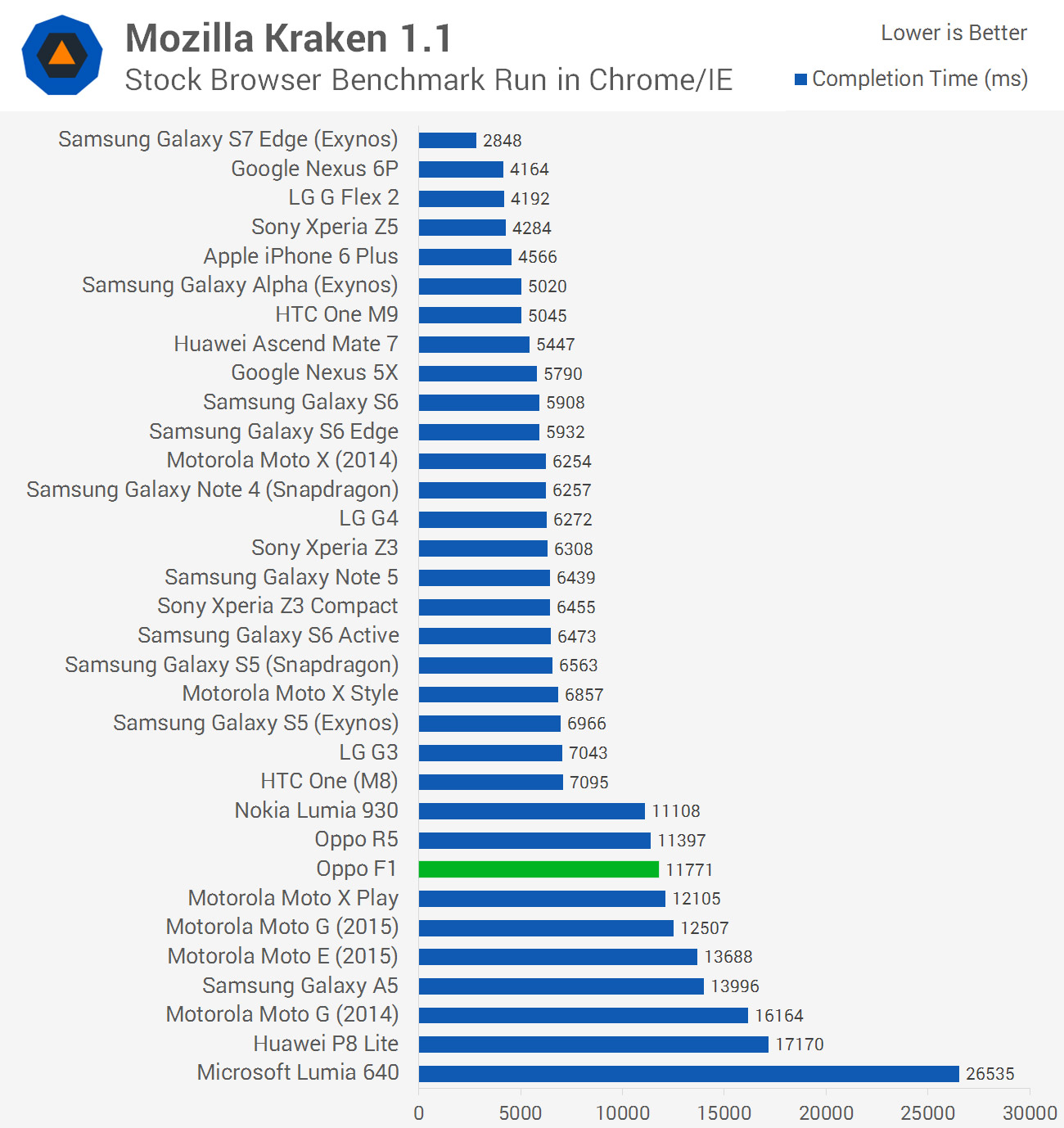
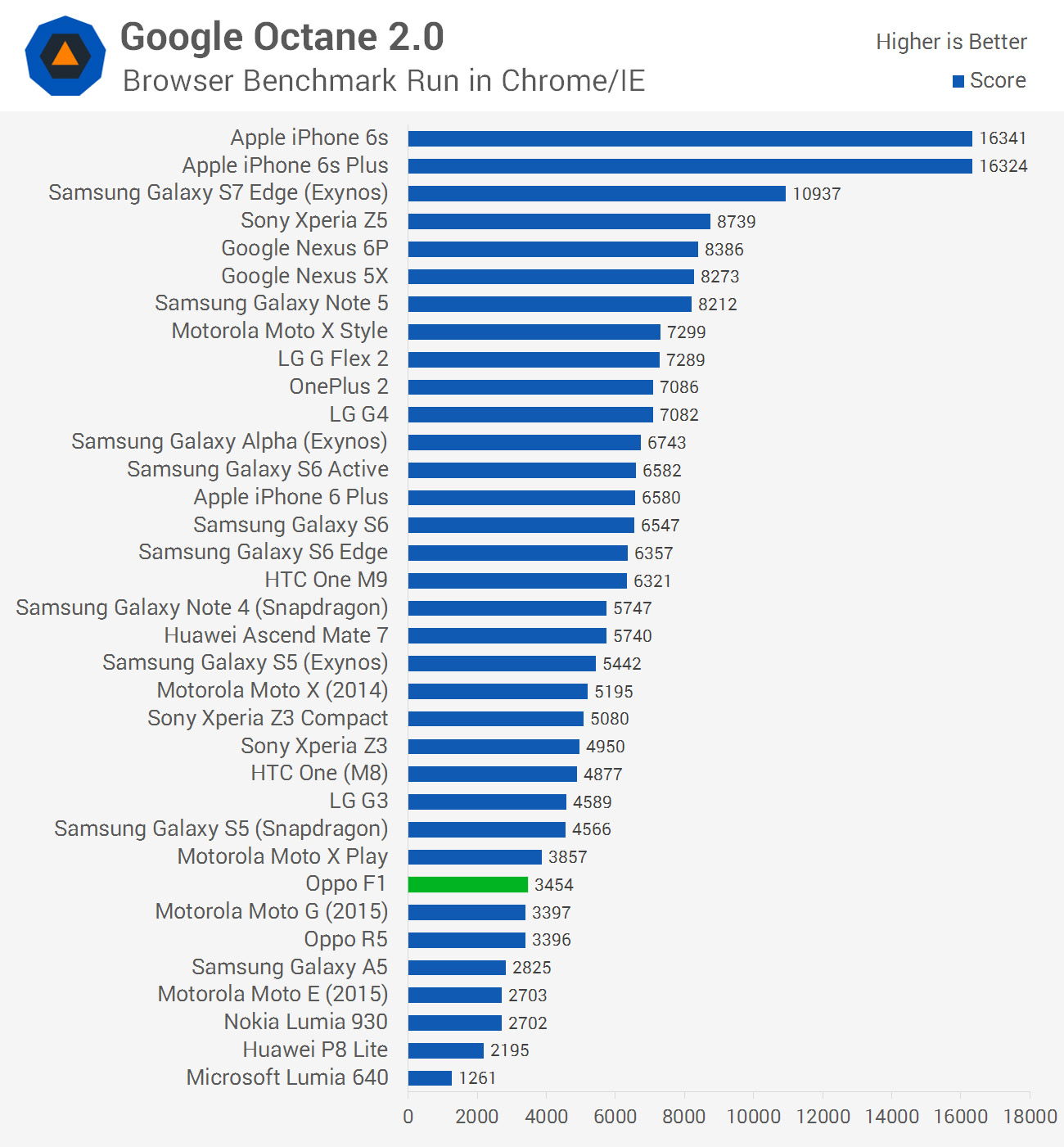
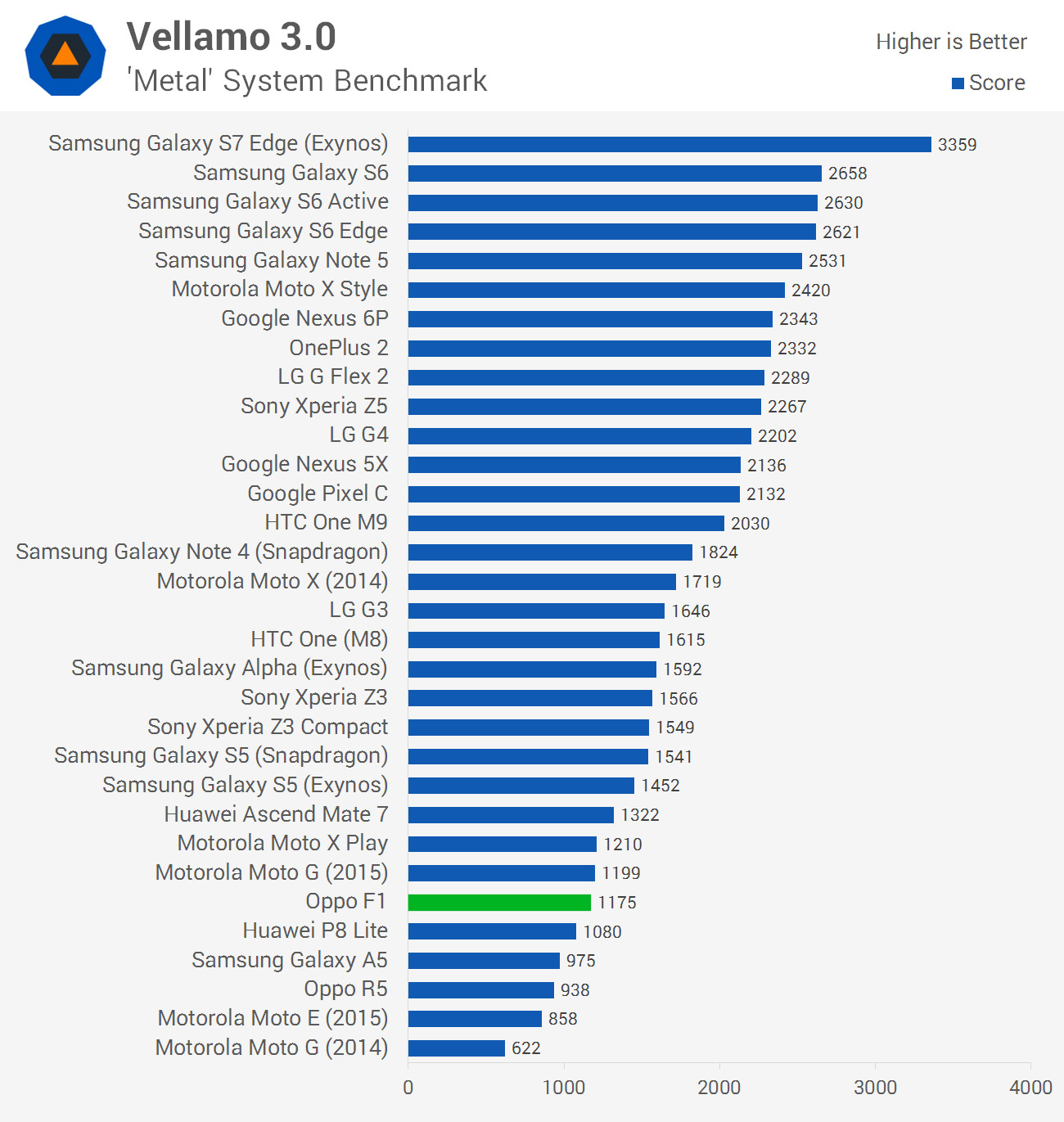
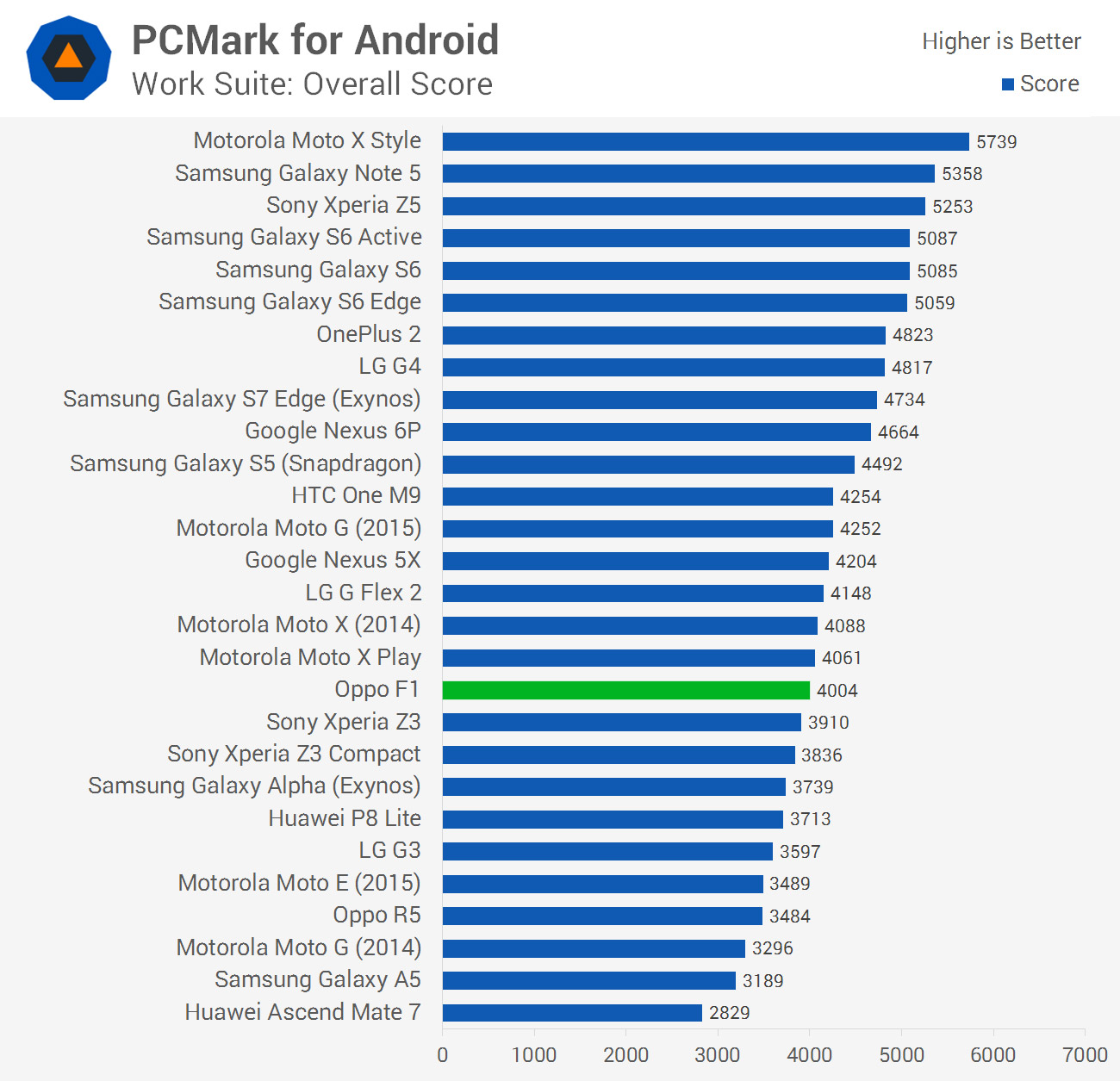
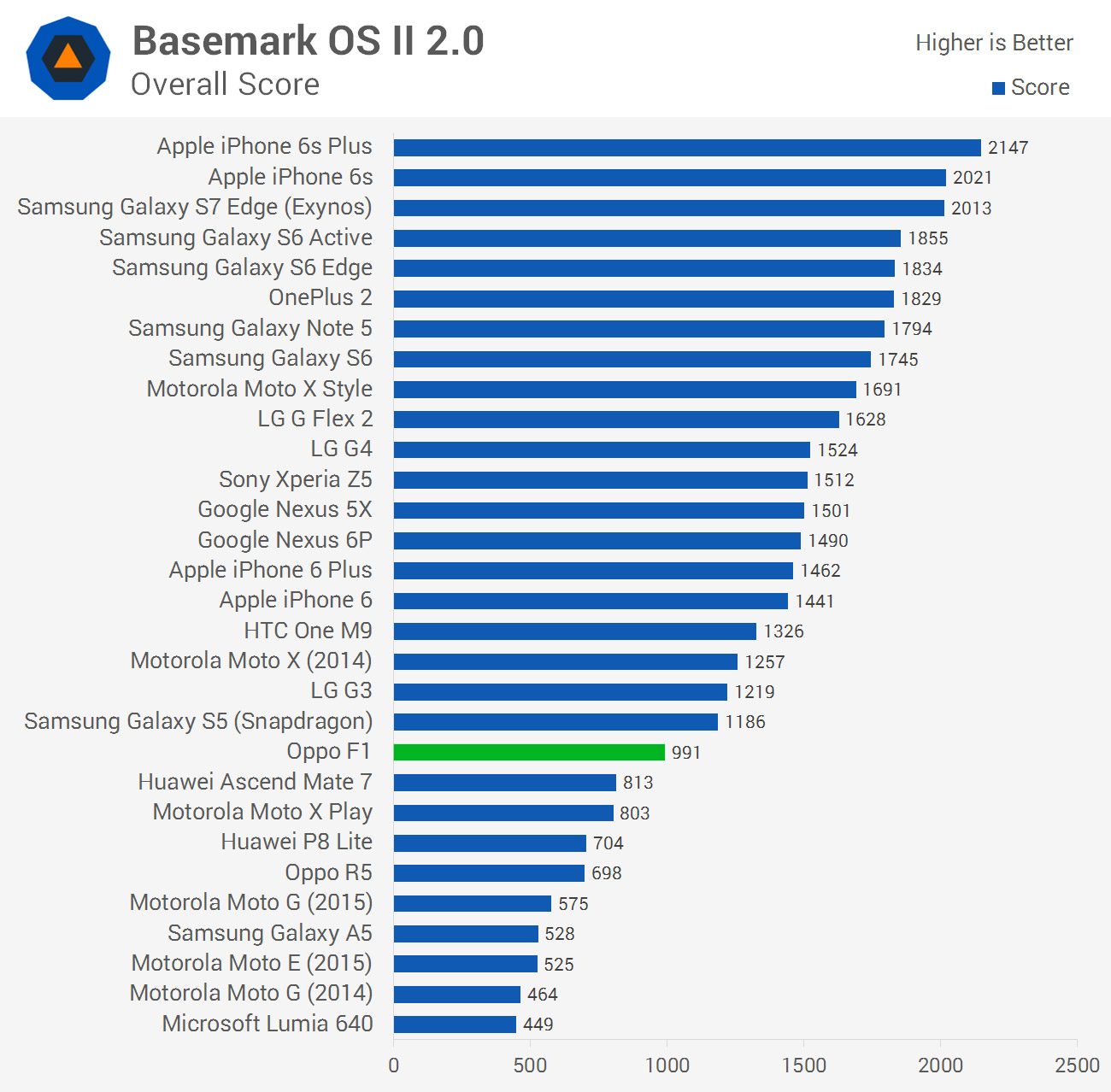
In the benchmarks above, the Oppo F1 was, on average, 8% faster in CPU-limited workloads than the Moto G 2015.
